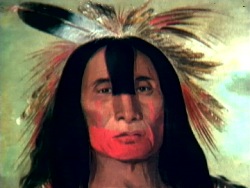Victor Masayesva, Jr.
Biography
Victor Masayesva, Jr. has created a rich body of video and photographic work that represents the culture and traditions of Native Americans — particularly the Hopi of Southwest Arizona — through poetic visualizations. Masayesva employs computer animation and graphics in lyrical translations of Hopi myths, rituals and history. Articulating the richness of his heritage in his own language, he allows the Hopi voice to be heard.
In the evocative Itam Hakim, Hopiit (1985), a tribal elder recounts Hopi philosophy and prophesy in an eloquent personal and cultural history. Challenging the ethnographic imposition of cultural interpretation, Masayesva has written of "developing a new iconography originating from the mythical and visual songplay of our forefathers." He continues: "Recognizing the foundations of communications on the North American continent is the first step in participating in the development of a bold communications iconography by which we can become involved in a vibrant visual literacy. We must listen to the songs being sung in the Third World countries, for experience is being offered in sacred terms which we must accept in the spirit of the offering."
Masayesva was born in 1951. He attended Princeton University and pursued graduate studies at the University of Arizona, Tucson. His numerous awards include fellowships from the Ford Foundation, the Rockefeller Foundation and the Southwest Association on Indian Affairs; and grants from the National Endowment for the Arts and the Arizona Commission on the Arts. He has been guest artist and artist-in-residence at the School of the Art Institute of Chicago, Princeton University, and The Yellowstone Summer Film/Video Institute, Montana State University. His videotapes have been exhibited internationally at festivals and institutions including the Native American Film and Video Festival, New York; The Museum of Modern Art, New York; Long Beach Museum of Art, California; World Wide Video Festival, The Hague; Whitney Museum of American Art Biennial, New York; Haus der Kulturen der Welt, Berlin; San Francisco Art Institute; and the American Indian Contemporary Arts "Festival 2000," San Francisco. He lives in Hotevilla, Arizona.
